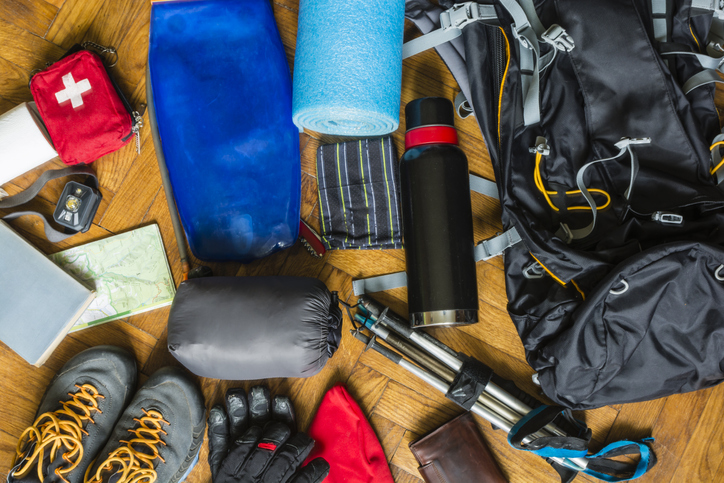Properly storing your outdoor sporting equipment helps you keep it in tip-top condition so that it’s always ready for your next adventure. Sporting gear can represent a substantial financial investment, so it’s essential to protect it and support its longevity with appropriate care. Moreover, carefully maintaining your outdoor sports gear will ensure that it functions the way it’s supposed to, which leads to a safer sporting experience. Here, we’ll explore how to store your outdoor sporting gear so it will last for years to come.
Camping
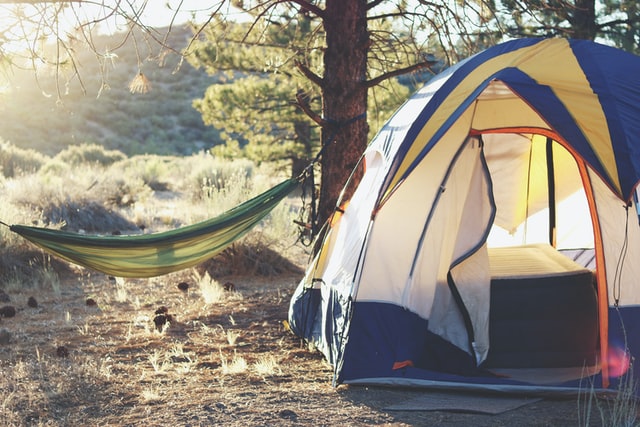
Many types of camping equipment are designed to stand up to the outdoor elements, so they’re fairly tough, but that doesn’t mean they don’t require proper maintenance and storage once you return from the wilderness. One of the difficulties of storing camping gear is that it tends to be so diverse—sleeping bags, tents, camp kitchen items, clothing, etc. Plus, if your camping gear includes items belonging to an entire household, it may require quite a bit of storage space.
Ideally, it’s helpful to keep your camping gear together in one spot, but that’s not always possible. Here, we’ll outline some of the best ways to store various types of camping equipment to keep it in the best possible condition.
Pre-storage preparation
Before stowing your camping gear, be sure to make sure all items are clean and thoroughly dried before placing them in storage. Any organic material or damp can foster mold growth if it’s allowed to sit on your equipment for some time. A sleeping bag coated with mildew is not something you want to deal with just before heading out on your next camping trip.
Also, you may want to invest in some type of storage system for your diverse range of camping supplies. You can purchase ready-made storage units, or you can build your own from wood shelving and rubber bins with tight-fitting lids. If you do opt to store your camping gear in your garage, you’ll definitely want to use hard plastic or rubber bins to protect it from dirt and pests.
How & where to store camping gear
Many people do store their camping equipment in their garage, which is an option, but you may also choose to keep it in your basement or even in a spare closet. Here, we’ll consider some specific ways to store various types of camping equipment:
Clear plastic bins
Transparent bins give you a view of what’s inside. If you use colored containers, just tape a list to its side to know what items it contains. Clean storage bins are ideal for storing a wide range of camping items, including:
- Canteens
- Tent stakes
- Camp kitchen items
- Clothing
- Tarps
- Camping implements (i.e. compass, knife, rope, candles, whistle, flashlight, etc.)
Shelves
Wide shelving is ideal for storing more oversized items such as your tent and cooler. Be sure that you store your tent loosely; many experienced campers often roll up their tent and store it in a pillowcase, if not the tent’s own nylon bag.
Sleeping bags
Sleeping bags can also be stored in rubber totes or even safely stored in closets in pillowcases or rolled up into their nylon bags.
Camping is not just a great way to get away from reality; it’s also a great chance for kids to connect with nature, learn vital life skills, and, most importantly, have fun and just be kids. Get your gear out and enjoy a stress-free family camping trip.
Check out this incredible article for some tips on winter camping for beginners.
Cycling
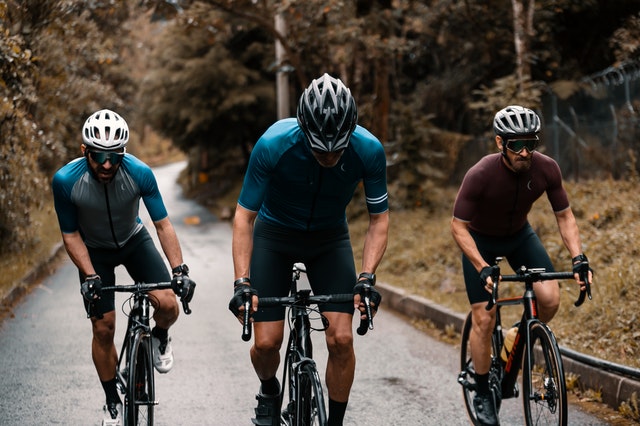
Bikes and their associated gear can take up a lot of space. Suppose you own a garage, especially a multi-car garage with room for storage. In that case, you may still find it cumbersome to store your cycling equipment without a sound system of organization. With these tips, you should be able to stow your bicycle gear so that it’s easily accessible but also out of the way.
Sort, clean, fix
Before placing your cycling equipment in storage, be sure to sort it and clean it. If any items require repair, it’s best to have them fixed before you store them. After cleaning the items, be sure they’re dry before placing them in storage. Sorting them carefully allows you to keep items like bike seats, repair kits, chains, and the rest together so that they’re easier to retrieve when you want to ride.
Organization/storage ideas
Often, your available storage space will dictate how you store your cycling gear. There are many ways to store your cycling equipment; you can purchase wall and ceiling mounts, for instance, so the items don’t take up floor space. If you live in a house and have multiple bikes, you might want to invest in a storage shed for your equipment that allows you to stow your bikes, bike tools, helmets, and other gear in one spot. You can also devote a section of your garage to cycling storage. If you do store items outdoors, be sure to use hard plastic totes to keep things safe from pests and dirt.
Hiking
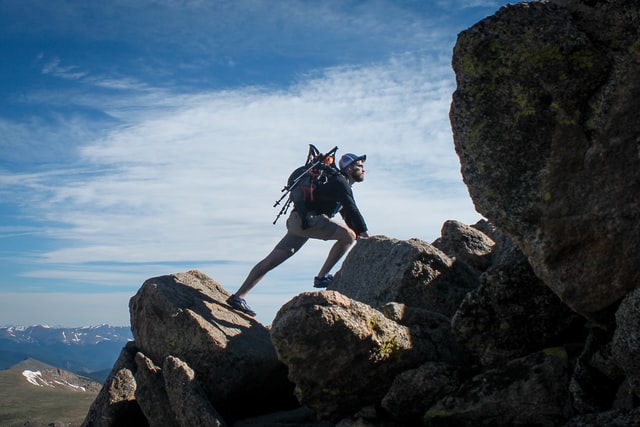
Your hiking and backpacking gear contains some essential items–or certainly should if you tend to venture far into the wilderness. Good maintenance and careful storage practices will keep these items in adventure-ready condition. Fortunately, if your gear consists of only what you can carry, you don’t need a lot of space for proper hiking equipment storage.
How to store hiking equipment
In most cases, a closet and some rubber totes are all you need to store your hiking gear. Before placing items in storage, clean them and make sure they’re in good condition. If any items show wear, you might want to replace them before your next hike.
If you’re storing the items inside your home, you can use a pegboard or a shelving unit to stow things like your backpack and its contents. If you prefer to store these items in your garage, you should maintain them in a rubber bin. Consider temperatures, however. Extreme heat may not be ideal for storing flashlights, a first aid kit, and compasses. You may want to keep items like these in your house in a small, easy-to-stow bin.
Boots
To remove caked-on mud and grime from dry boots, use a coarse brush. After you’ve removed as much filth as possible, clean the mesh and leather using a mild, no-residue detergent and warm water. Wait until next spring to apply a waterproofing compound to leather boots. Spray the insides and insoles of all boots with an anti-fungal spray and store with a few wads of newspaper inside to keep form.
Flashlight/headlamp/electronics
Remove the batteries from your flashlight, GPS, radio, and any electrical devices. Leaking batteries might irreversibly harm your equipment. Instead, recycle old batteries correctly, and keep your trekking gadgets with the battery boxes open to enable air circulation and corrosion prevention. If you haven’t already made the transition to rechargeable batteries, this is a great time to do so. Make it a point to recycle your old batteries.
Clothing
Use a non-residue detergent to wash your hiking gear. Keep in mind that liquid fabric softener should not be used on most wicking textiles. If you’re preparing to go on a new trekking season, you can protect yourself from ticks by applying insect repellent on your clothing.
First-aid procedures
Examine your first-aid kit’s contents. Are your band-aids soiled or soiled? Are your medicines outdated, or have you exhausted your ibuprofen supply? It’s time to replace your soiled bandages and replenish your medication cabinet. Keep a note of what you usually take with you so you can readily see if something has run out.
Climbing
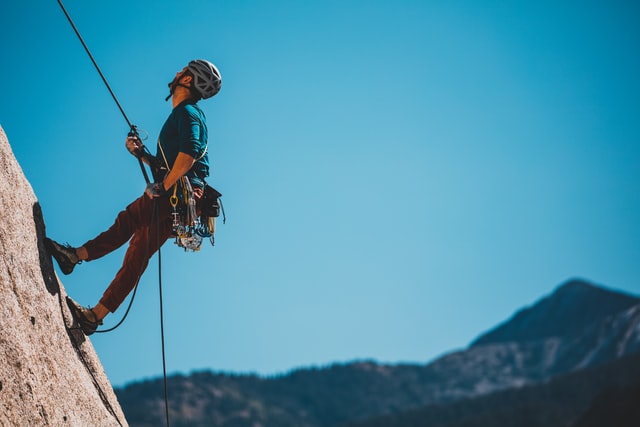
When it comes to climbing gear, good storage is crucial. Any climbing equipment that shows signs of wear should be treated with suspicion as your safety depends upon its function. Keeping these items clean, mold-free, and stowed in a well-ventilated area can promote their longevity. Even so, always inspect your climbing gear before you attempt a climb.
Preparing climbing gear for storage
Before putting your climbing apparatus in storage, clean and inspect it. If items are worn or broken, replace them rather than putting them in storage where you might forget their condition. As a double safety, you should always check each item before climbing too.
How to store climbing gear
Climbing gear has a lot riding on its functionality–namely, you! It’s best to store these materials in a clean, well-ventilated place. Storing ropes and hooks in the garage is possible, provided you keep them meticulously contained in an airtight, moisture-resistant receptacle. Still, you can also store them indoors without taking up a lot of space.
For instance, you can set up a pegboard in a closet or section of a room to hang your climbing implements. Ropes, harnesses, shoes, a camera—these items can even be placed in a closet and kept in rubber bins. If you have a laundry room, consider designing a corner or wall to house your climbing kit. You can set up shelving that will accommodate your bins and outdoor clothing.
Tips to Take Care of Your Sea Stack Climbing Gear

Photo by Lain Miller
When rock climbing on sea cliffs and sea stacks great care must be taken to clean the saltwater from your climbing equipment. All traces of saltwater must be rinsed and cleaned from your climbing gear before you store it for any length of time.
Sea Stack climbing involves gaining access to and climbing towers of rock that stick out of the world’s oceans and seas. These towers usually live at the bottom of huge inaccessible sea cliffs and are surrounded by angry white ocean. Unlike standard rock climbing, sea stack climbing will involve you getting into the sea to swim or paddle to the base of your sea stack. For example, Cnoc na Mara in Donegal, Ireland, lives 20 km from the nearest main road and at the base of a 1000 foot sea cliff. It is has a pinpoint summit that sits 100 meters above the ocean, and it is separated from mainland Ireland by 150 meters of bouncy north Atlantic Ocean. Climbing Cnoc na Mara is a very long day out, which will almost definitely involve you and your climbing gear getting soaked in seawater.
It is vitally important that this seawater is removed before you store your climbing gear away. If you store your climbing gear away wet or damp with salt water, it will dry, leaving the salt on your equipment. This salt will attack and damage both the metals and softer materials of your equipment; cams especially are very easy to damage in this way irreparably.
After climbing near saltwater is always best to rinse and work all climbing equipment to remove all the traces of saltwater. Once all seawater is rinsed, then allow your equipment to dry. Once your gear is dry, make sure all moving parts still move before storing it away for a longer time. Taking this extra step while storing your equipment will help ensure it remains safe to use for a very long time.
Skydiving
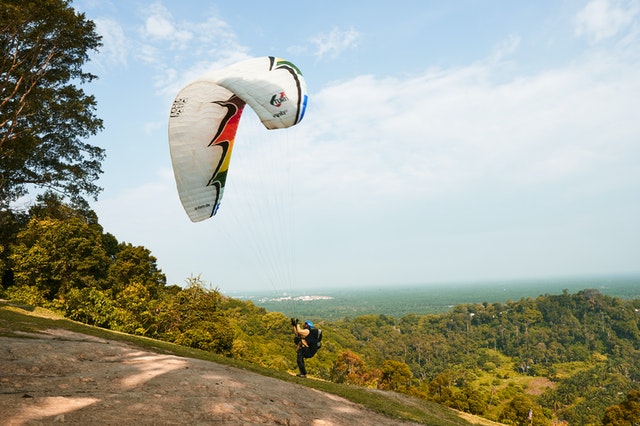
If you’re a skydiving enthusiast, you likely have your own equipment. Many skydiving operations provide clients with the gear they need for a jump. However, if you have your own skydiving gear, you’ll need to stow it carefully to ensure proper functioning. Proper functioning is essential where safety is concerned. With a pastime like this, there’s no room for errors.
How to store skydiving equipment
Your skydiving gear probably includes items such as:
- Jumpsuit
- Goggles
- Altimeter
- Automatic activation device
- Main canopy and reserve canopy
- Helmet
- Container system
These are the basics, of course, and you’ll need them to be in perfect condition before any jump. Given the extreme care that must be taken to ensure safety, you should store your skydiving equipment inside of your well-ventilated home. It’s essential to keep these items away from kids, pets, and pests to keep them safe and jump-ready.
Organization tips
If you have a spacious closet, you should store your skydiving equipment inside of it. Much of it can be maintained in rubber totes. On the other hand, you can also construct a special storage unit on a wall or in a section of your bedroom or laundry room to keep these items safe. Enclosed cabinetry works well because it keeps items dust-free and away from pets like dogs or cats.
Paragliding
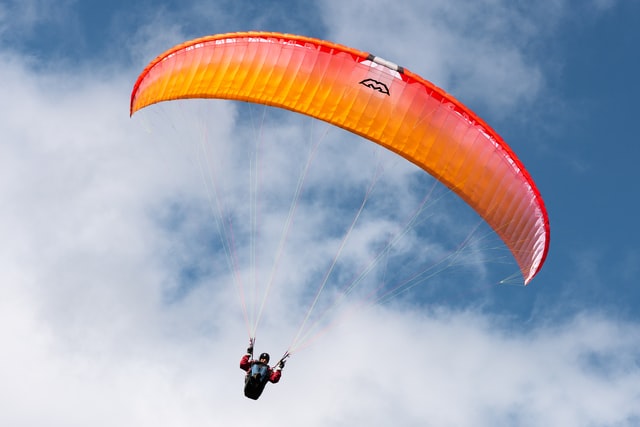
As with skydiving equipment, paragliding equipment must be stored optimally to ensure safety. Storing it in a garage without adequate protection can leave it vulnerable to pests and dirt. You’ll want to keep items like parachutes, the paraglider itself, harness, compass, and other such things clean and dry so that it’s ready for your next flight. Even so, you should always inspect your equipment before you head out to ensure that it’s safe.
How to store paragliding equipment
Most of your paragliding equipment will fit into storage bins and can be placed in a closet or even your basement. However, the paraglider will need more space. A garage isn’t an optimum place to store a paraglider because of temperature shifts and the potential for dirt and debris. However, if you can keep the glider in an enclosed cabinet, it should be fine. Similarly, you can store the glider in a closet or cabinet inside your home. Some people opt to wrap the item in a lightweight tarp and hang it from their wall or ceiling.
Wrap up
By organizing and storing your sporting equipment with care, you should enhance its longevity, which allows you to get as much value from your gear as possible. As you likely noticed, a common theme with these types of equipment is cleanliness. With all gear, you should strive to clean items thoroughly before you store them. Investing in strong rubber bins that lockout dust, moisture, and pests is also a good idea for keeping all types of equipment stowed safely.
